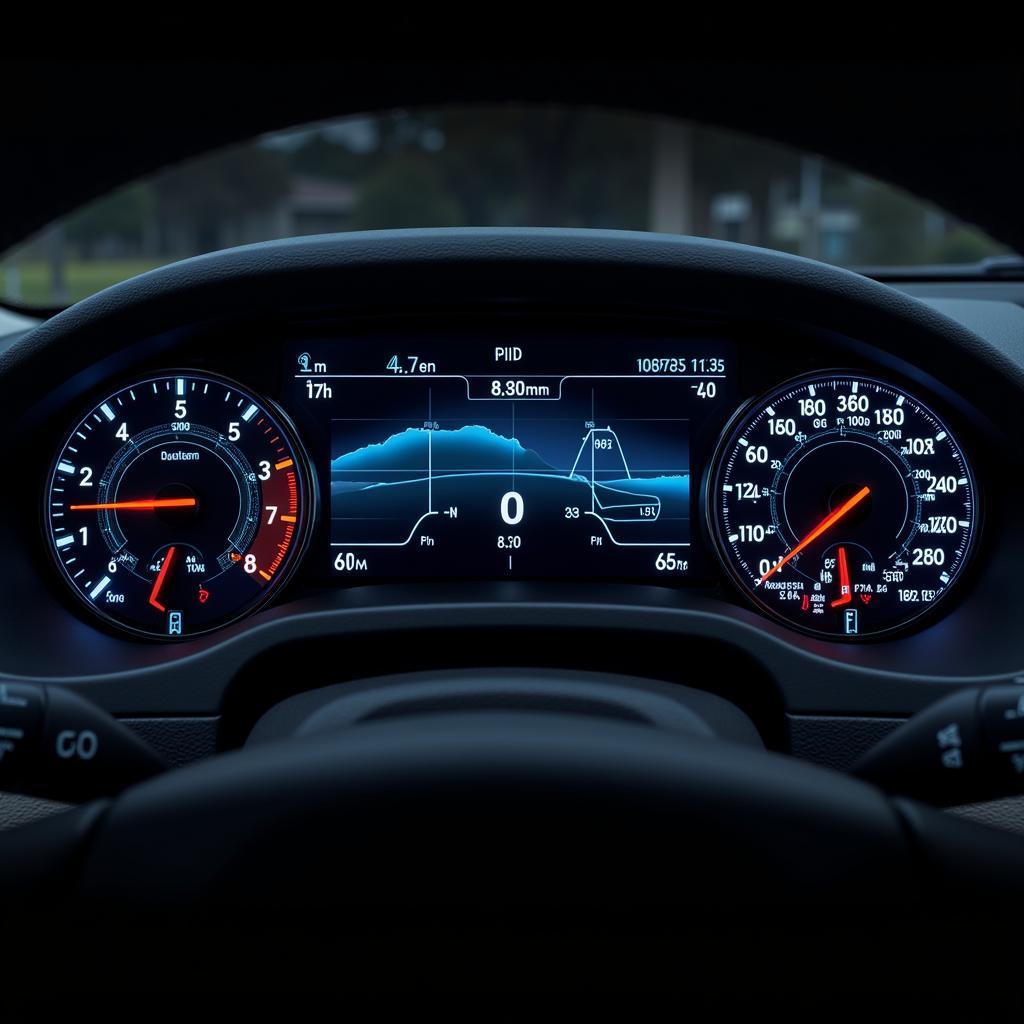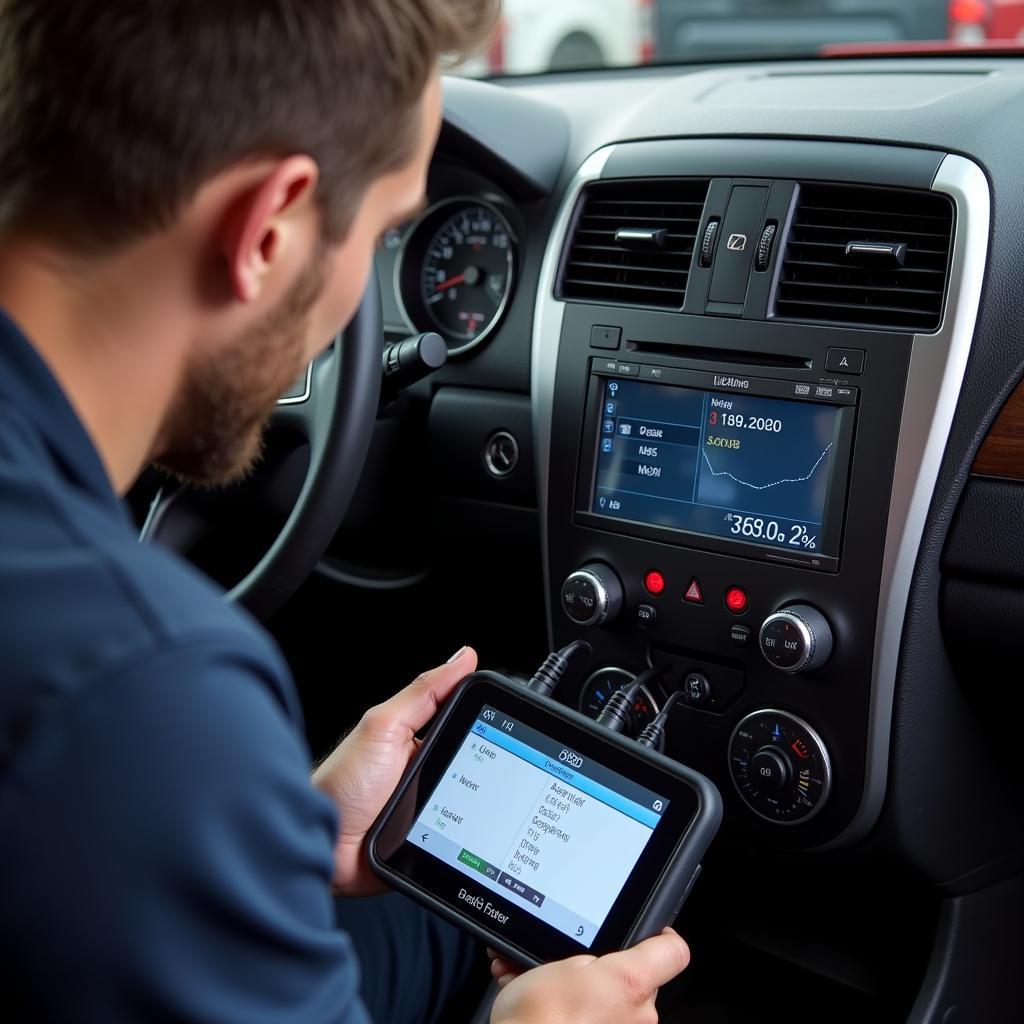A Sensor Scanner For Cars is an essential tool for any car owner or mechanic. It allows you to communicate with your car’s computer, read and clear error codes, and monitor live data from various sensors. Whether you’re a DIY enthusiast or a seasoned professional, having the right sensor scanner can save you time, money, and frustration in the long run.
Understanding Car Sensors and Their Importance
Modern vehicles are equipped with a complex network of sensors that constantly monitor various systems, including the engine, transmission, brakes, emissions, and more. These sensors collect data and send it to the car’s computer, also known as the Engine Control Unit (ECU). The ECU uses this information to optimize engine performance, fuel efficiency, and emissions control.
When a sensor detects a problem, it triggers a warning light on the dashboard, such as the check engine light. This is where a sensor scanner comes in handy.
Types of Sensor Scanners for Cars
There are several types of sensor scanners available, each with its own set of features and capabilities:
-
Basic Code Readers: These entry-level scanners can read and clear basic OBD-II (On-Board Diagnostics) codes. They are affordable and suitable for car owners who want to diagnose simple issues. If you are a home mechanic and want an affordable yet capable option, consider exploring the best car scanner for home mechanic options.
-
Enhanced Code Readers: These scanners offer more advanced features, such as live data streaming, freeze frame data, and the ability to read manufacturer-specific codes.
-
Professional-Grade Scanners: These high-end scanners provide comprehensive diagnostics, advanced programming functions, and access to all vehicle systems. They are typically used by professional mechanics. Mechanics looking for the best all-around scanner may be interested in checking out the best car scanner options on the market.
How to Use a Sensor Scanner for Cars
Using a sensor scanner is a straightforward process:
- Locate the OBD-II port. This port is usually located under the dashboard on the driver’s side.
- Plug in the sensor scanner. Make sure the car’s ignition is turned off.
- Turn on the ignition. Do not start the engine.
- Follow the on-screen instructions. The scanner will guide you through the process of reading and clearing codes.
Benefits of Using a Sensor Scanner for Cars
- Save Money: By diagnosing problems yourself, you can avoid costly trips to the mechanic.
- Save Time: Sensor scanners can quickly identify issues, saving you time and hassle.
- Gain Peace of Mind: Knowing what’s wrong with your car can give you peace of mind and help you make informed repair decisions.
- Prevent Further Damage: Early detection of car problems can help prevent further damage and costly repairs.
Choosing the Right Sensor Scanner for Your Needs
When choosing a sensor scanner for cars, consider the following factors:
- Your Budget: Prices can range from affordable to expensive, depending on the features and capabilities.
- Your Skill Level: Basic code readers are suitable for beginners, while professional-grade scanners are better for experienced users.
- Vehicle Compatibility: Make sure the scanner is compatible with your car’s make, model, and year. Some scanners are specifically designed for certain car brands.
Common Car Sensor Problems and Their Solutions
-
Oxygen Sensor: A faulty oxygen sensor can cause decreased fuel efficiency and increased emissions.
- Solution: Replace the oxygen sensor.
-
Mass Air Flow (MAF) Sensor: A dirty or faulty MAF sensor can lead to poor engine performance and stalling.
- Solution: Clean or replace the MAF sensor.
-
Throttle Position Sensor (TPS): A malfunctioning TPS can cause problems with acceleration and idling.
- Solution: Replace the TPS.
-
Camshaft Position Sensor: A faulty camshaft position sensor can cause engine misfires, poor performance, and difficulty starting.
- Solution: Replace the camshaft position sensor.
-
Crankshaft Position Sensor: A failing crankshaft position sensor can prevent the engine from starting.
- Solution: Replace the crankshaft position sensor.
Advanced Features to Look for in a Sensor Scanner
-
Live Data Streaming: This feature allows you to monitor live data from various sensors, providing valuable insights into your car’s performance.
-
Freeze Frame Data: This feature captures a snapshot of the engine’s operating conditions at the time a fault code was stored.
-
Bi-Directional Control: This feature allows you to perform tests and activate components, such as turning on the fuel pump or cycling the ABS system. A popular option for bi-directional control is the OBDII and CAN scan tool.
-
Wireless Connectivity: Some scanners offer Bluetooth or Wi-Fi connectivity, allowing you to view data on your smartphone or tablet.
Tips for Using a Sensor Scanner Effectively
- Read the Manual: Familiarize yourself with the scanner’s features and functions before using it.
- Clear Codes After Repairs: After making repairs, clear the fault codes to ensure the issue is resolved.
- Update the Scanner’s Software: Manufacturers often release software updates that improve functionality and add new features.
- Seek Professional Help When Needed: While sensor scanners are powerful tools, some problems require the expertise of a qualified mechanic.
Conclusion
A sensor scanner for cars is an invaluable tool for anyone who wants to understand and maintain their vehicle’s health. From basic code readers to professional-grade scanners, there’s a scanner out there for every need and budget.
By investing in a quality scanner and learning how to use it effectively, you can save money, time, and frustration in the long run. Whether you’re a DIY enthusiast or a professional mechanic, a sensor scanner is an essential tool for keeping your car running smoothly.
For further assistance in choosing the right sensor scanner for your needs, feel free to contact ScanToolUS at +1 (641) 206-8880 or visit our office at 1615 S Laramie Ave, Cicero, IL 60804, USA.


